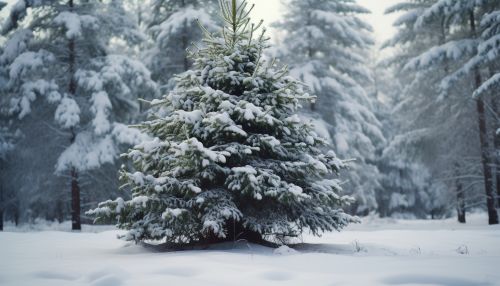Winter Dormancy in Plants
Introduction
Winter dormancy in plants is a period of inactivity or rest that allows plants to survive unfavorable environmental conditions, particularly the cold temperatures and reduced daylight hours of winter. The phenomenon is an adaptive strategy that is common in perennial plants, both deciduous and evergreen, and is characterized by a cessation of growth, a reduction in metabolic activity, and often the shedding of leaves.
Physiological Changes During Dormancy
Plants undergo a number of physiological changes as they enter dormancy. These changes are triggered by environmental cues, primarily decreasing daylight hours and falling temperatures, and are mediated by changes in the levels of plant hormones such as abscisic acid and gibberellins.
Abscisic Acid and Dormancy
Abscisic acid (ABA) plays a key role in the induction of dormancy. As daylight hours shorten and temperatures drop, the levels of ABA in the plant increase. This hormone promotes the closure of stomata, reducing water loss, and inhibits cell growth and division, effectively putting the plant into a state of rest.
Gibberellins and Dormancy
Conversely, gibberellins (GAs) promote growth and development in plants. During the onset of dormancy, the levels of GAs decrease, further contributing to the cessation of growth.
Dormancy in Deciduous Plants
Deciduous plants are perhaps the most visible examples of winter dormancy, as they shed their leaves in the fall in preparation for the winter months. This is a protective strategy that prevents water loss through transpiration and reduces the risk of damage from freezing.
Leaf Senescence and Abscission
The process of leaf shedding, or abscission, is preceded by senescence, the aging and eventual death of the leaf. During senescence, nutrients in the leaf are mobilized and transported back into the plant, and the leaf changes color, a phenomenon that results in the vibrant hues of fall foliage.
Role of Ethylene in Leaf Abscission
The plant hormone ethylene plays a crucial role in leaf abscission. As daylight hours shorten and temperatures drop, the levels of ethylene in the plant increase, triggering the formation of an abscission layer at the base of the leaf stem. This layer effectively seals off the leaf from the rest of the plant, leading to its eventual detachment.
Dormancy in Evergreen Plants
Evergreen plants, while they do not shed their leaves in winter, also undergo a period of dormancy. This is often less visible than in deciduous plants, but is nonetheless a crucial survival strategy.


Reduced Metabolic Activity
In evergreen plants, dormancy is characterized by a significant reduction in metabolic activity. Photosynthesis, respiration, and transpiration rates all decrease, conserving energy and water.
Frost Hardiness
Evergreen plants also develop frost hardiness, an increased resistance to freezing temperatures. This is achieved through a number of mechanisms, including the accumulation of solutes in the cell sap, which lowers the freezing point, and changes in the composition of cell membranes, which makes them more resistant to damage from ice crystals.
Breaking Dormancy
As winter gives way to spring, plants break dormancy and resume growth and development. This process is triggered by environmental cues, primarily increasing daylight hours and rising temperatures, and is mediated by changes in the levels of plant hormones.
Role of Cytokinins and Auxins
The plant hormones cytokinins and auxins play key roles in breaking dormancy. Cytokinins promote cell division and growth, while auxins stimulate cell elongation. As daylight hours lengthen and temperatures rise, the levels of these hormones in the plant increase, signaling the end of dormancy and the resumption of growth.
